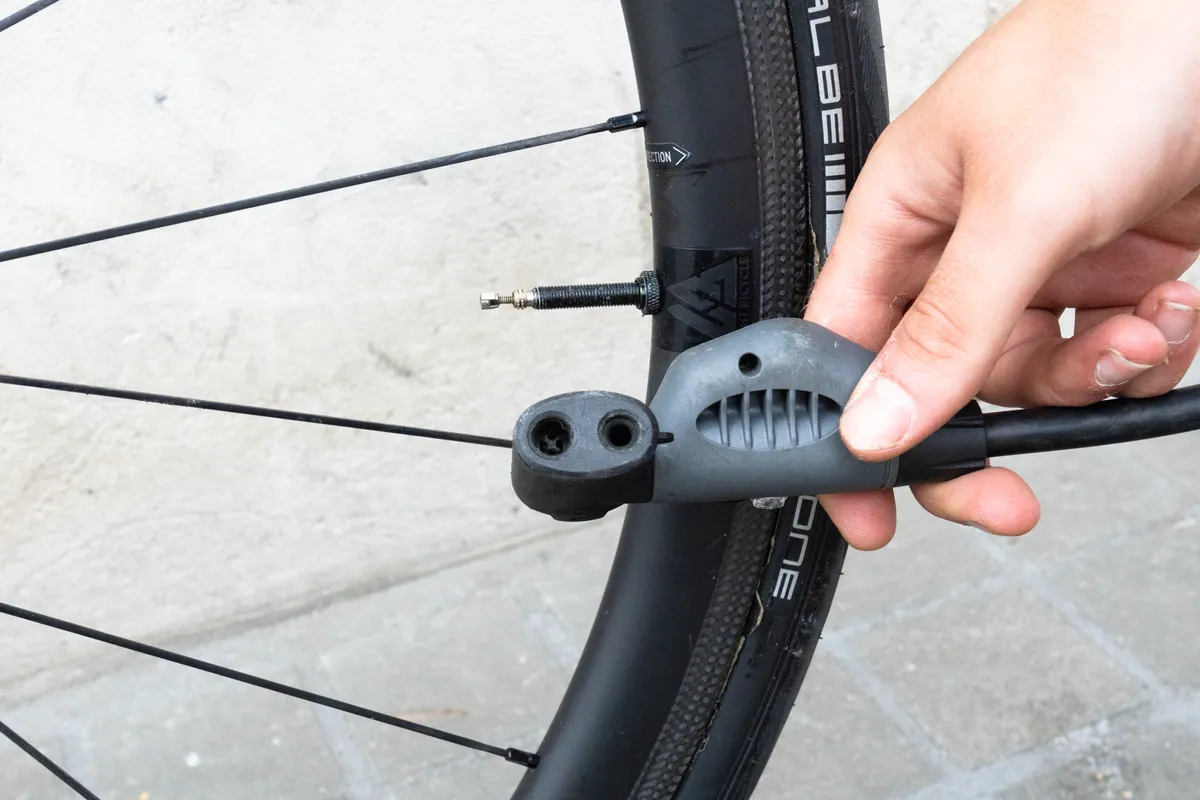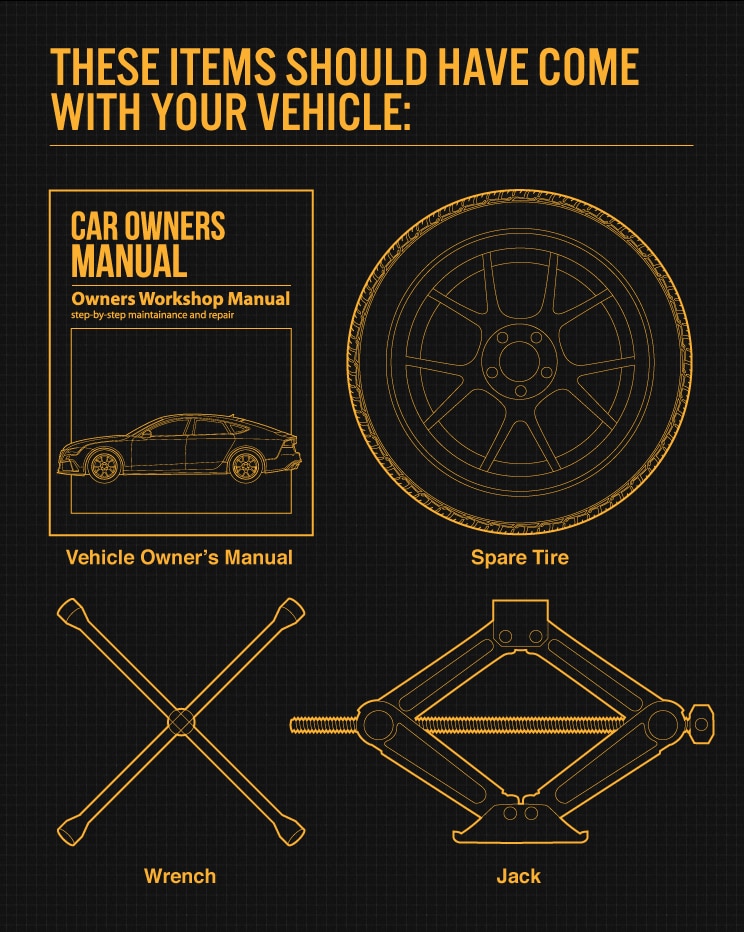Learn how to put air in tire with our quick and easy step-by-step guide. Ensure optimal tire pressure effortlessly for a smooth and safe ride. Discover now!
Maintaining proper tire pressure is crucial for safe driving and fuel efficiency.
Checking and filling your tires with air regularly can extend their lifespan and prevent potential flats or blowouts.
Understanding how to put air in your tires is a basic but essential skill that every driver should know.
In this guide, we will cover the step-by-step process of how to put air in your tires and provide some tips for optimum tire maintenance.
Gathering Materials
Gathering the necessary materials is the first step in putting air in a tire to ensure your vehicle performs efficiently.
Check the Tire Pressure Gauge
Start by grabbing a tire pressure gauge to measure the current pressure accurately.
Locate Air Pump
Next, find an air pump that is easily accessible and operational for this task.

Credit: www.bikeradar.com
Checking Tire Pressure
Checking tire pressure is crucial for maintaining the optimal performance and safety of your vehicle.
Consult Vehicle Manual
Refer to the vehicle manual for the recommended tire pressure specifications.
Use Tire Pressure Gauge
Utilize a tire pressure gauge to accurately measure the pressure in each tire.
Adding Air To The Tire
Adding air to your tires is an essential part of your vehicle’s maintenance routine.
Properly inflated tires not only ensure a smoother and fuel-efficient drive but also contribute to road safety.
Here’s how you can effortlessly add air to your tire.
Remove Valve Stem Cap
Before adding air to your tire, securely park your vehicle and remove the valve stem cap from the tire that needs inflating.
Place the cap in a safe location where it won’t be misplaced. This step allows you to gain access to the valve stem for the next process.
Connect Air Hose To Valve Stem
Next, take your air compressor’s hose and connect it to the valve stem of the tire.
Ensure the hose nozzle is securely and tightly fastened to prevent air from escaping.
Double-check the connection to avoid any potential leaks or inaccuracies in the air pressure measurement.
Inflating The Tire
Set Desired Pressure Level:
Before you start inflating your tire, it’s crucial to know the proper pressure level it should be filled to.
Refer to the owner’s manual or the sticker located on the driver’s door jamb to determine the recommended pressure.
Make sure you set the pressure level to the desired amount before proceeding.
Start the Air Pump:
Once you’ve set the desired pressure level, it’s time to start the air pump. Locate the air valve on the tire and remove the cap.
Insert the nozzle of the air pump into the valve, making sure it fits securely. Then, turn on the air pump and allow it to begin inflating the tire.
Remember to keep an eye on the pressure gauge as the tire starts to inflate. This will help you monitor the pressure level and prevent overinflation.
Monitor the Pressure:
While the tire is inflating, keep a close eye on the pressure gauge. As it approaches the desired level, you can adjust the airflow using the pump’s settings.
Slow down the rate of inflation as you get close to the recommended pressure to prevent overfilling.
Check Pressure with a Tire Gauge:
After inflating the tire, it’s essential to double-check the pressure using a tire gauge.
This handy tool provides accurate measurements and ensures you’ve reached the correct pressure level.
Remove the nozzle of the air pump from the valve, then insert the tire gauge into the valve.
Read the pressure measurement on the gauge and compare it to the recommended level.
If the pressure is too low, you can use the air pump to add more air. If the pressure is too high, release some air by pressing on the pin in the center of the valve with a small tool or the tip of a pen.
Replace the Valve Cap:
Once you’ve achieved the appropriate pressure level, it’s important to put the valve cap back on.
This cap helps prevent dirt and debris from entering the valve and causing damage. Securely screw the valve cap back in place to ensure it stays put.
Repeat for Other Tires:
If you’re inflating one tire, it’s essential to repeat the process for the other tires as well.
Remember, maintaining proper tire pressure is crucial for safe driving and optimal vehicle performance.
Take the time to check and adjust the pressure in each tire regularly.
Follow these steps when inflating your tire, and you’ll be on your way to ensuring a safe and smooth ride!
Final Steps
When putting air in your tire, start by removing the valve cap. Then, attach the air hose and inflate the tire to the recommended pressure.
Check the pressure with a gauge and adjust as needed, then replace the valve cap – your tire is now ready to go.
Pumping air into your tires is an important part of regular vehicle maintenance, and it’s essential to follow the correct steps to ensure proper inflation.
Once you have finished adding air to your tires, there are a few final steps to take to complete the process.
Check Pressure Again
After filling your tires with air, it’s crucial to check the pressure again to ensure they are properly inflated.
Use a reliable tire pressure gauge to measure the pressure in each tire.
Refer to your vehicle’s manual or the information sticker located on the driver’s side door jamb for the recommended tire pressure.
Replace Valve Stem Cap
Once you have confirmed that the tire pressure is correct, don’t forget to replace the valve stem cap.
The valve stem cap helps to keep dirt and debris out of the valve stem, preventing air leakage and potential damage.
Make sure the cap is securely tightened to ensure a proper seal.

Credit: www.bridgestonetire.com

Credit: www.bikeradar.com
Frequently Asked Questions Of How To Put Air In Tire
How Do I Check My Tire Pressure?
To check your tire pressure, first, locate the valve stem on your tire. Then, press a tire pressure gauge onto the valve stem to get a reading.
Compare the reading to the recommended pressure for your vehicle, which can usually be found in your owner’s manual or on a sticker inside the driver’s side door jamb.
Can I Put Air In My Tire At A Gas Station?
Yes, most gas stations have air compressors with gauges that you can use to fill your tires with air.
Park near the compressor, remove the valve stem caps from your tires, and attach the air hose securely to the valve stem.
Press the lever to start filling your tires and check the pressure regularly using a tire pressure gauge.
How Often Should I Check My Tire Pressure?
It is recommended to check your tire pressure at least once a month and before long trips.
Temperature changes can cause tire pressure to fluctuate, so it’s important to maintain the correct pressure for optimal performance, fuel efficiency, and tire longevity.
Can I Overinflate My Tires?
Yes, overinflating your tires can be dangerous. It can cause excessive wear in the center of the tread, reduce traction, and make the ride uncomfortable.
Always follow the recommended tire pressure for your vehicle, and if you accidentally overinflate your tires, release some air until you reach the correct pressure.
Conclusion
Proper tire maintenance is crucial for a safe and efficient driving experience. By following the simple steps outlined in this post, you can easily learn how to put air in your tire.
Regularly checking and maintaining tire pressure not only ensures your safety but also helps improve fuel efficiency and extends the life of your tires.
Keep your tires properly inflated and enjoy a smooth and hassle-free ride!

Sudatta is a passionate automotive enthusiast and expert in the field. With a keen eye for detail and a love for all things automotive, he shares insightful articles and reviews to ignite the automotive passion in readers.




